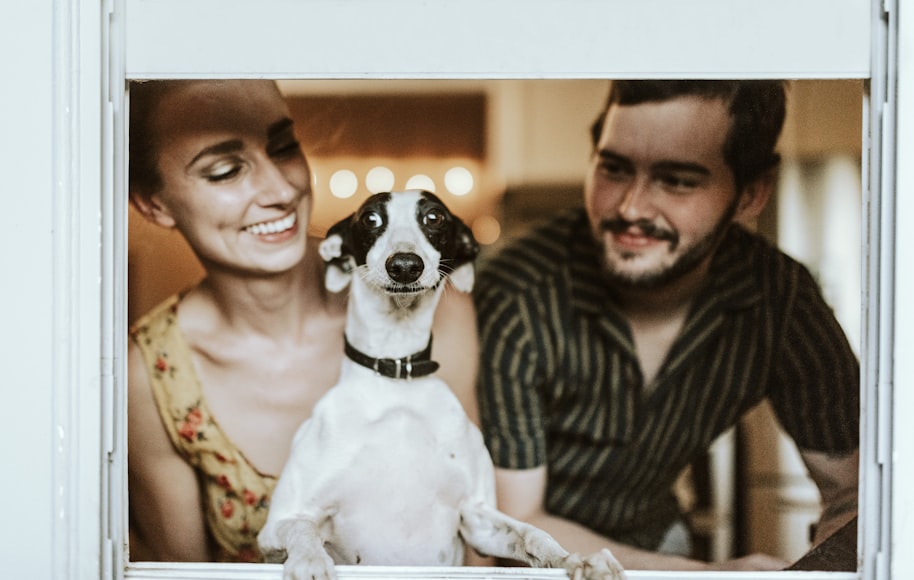Benzoyl Peroxide for Dogs: An Overview

Introduction
Benzoyl peroxide is a topical medication commonly used to treat skin conditions in humans, including acne. In recent years, it has also been gaining traction as a possible treatment option for certain skin problems in dogs. This article will provide an overview of benzoyl peroxide, its uses for dogs, potential side effects, and how to safely use it on your canine companion.
What is Benzoyl Peroxide?
Benzoyl peroxide is a chemical compound with antibacterial and antiseptic properties. It works by releasing oxygen into the skin, which helps kill bacteria and reduce inflammation. Benzoyl peroxide is available in various forms, including gels, creams, and shampoos.
Uses for Benzoyl Peroxide in Dogs
Benzoyl peroxide is primarily used to treat skin infections in dogs, particularly those caused by bacteria. Common conditions treated with benzoyl peroxide include:
- Pyoderma (bacterial skin infection)
- Folliculitis (inflammation of hair follicles)
- Hot spots
- Interdigital cysts (between the toes)
- Malassezia dermatitis (yeast infection)
How to Use Benzoyl Peroxide on Dogs
Benzoyl peroxide should always be used under the guidance of a veterinarian. The appropriate concentration and frequency of application will vary depending on the condition being treated and the individual dog’s skin sensitivity.
- Shampoos: Benzoyl peroxide shampoos are typically used once or twice per week to cleanse the affected skin. Lather the shampoo and allow it to sit for a few minutes before rinsing thoroughly.
- Topical Creams/Gels: Benzoyl peroxide creams or gels are applied directly to the affected areas 1-2 times daily. Gently massage the product into the skin. Avoid contact with the dog’s eyes, nose, and mouth.
Potential Side Effects
Benzoyl peroxide is generally considered safe for dogs, but it can cause side effects in some individuals, especially when used at high concentrations or for prolonged periods. Common side effects include:
- Skin irritation (dryness, redness, itching)
- Allergic reactions (swelling, hives)
- Bleaching of hair or fur
Important Considerations
- Consult a Veterinarian: Before using benzoyl peroxide on your dog, consult with your veterinarian to determine the appropriate dosage and frequency of application.
- Start Slowly: Start with a low concentration of benzoyl peroxide and gradually increase the strength as needed.
- Monitor Skin: Regularly check your dog’s skin for any signs of irritation or allergic reactions. If any occur, discontinue use and consult with your veterinarian.
- Avoid Contact with Eyes: Benzoyl peroxide can irritate the eyes. Avoid getting it into your dog’s eyes and rinse thoroughly if contact occurs.
- Keep Out of Reach: Store benzoyl peroxide products out of reach of pets and children.
Conclusion
Benzoyl peroxide can be an effective treatment option for certain skin infections in dogs. However, it should be used with caution and under the supervision of a veterinarian. By following these guidelines, you can ensure the safe and effective use of benzoyl peroxide to improve your dog’s skin health.
Introduction:

Introduction
Benzoyl peroxide is a common ingredient found in many human skincare products, but it also has therapeutic applications in veterinary dermatology. It is known for its antibacterial, antifungal, and anti-inflammatory properties, making it an effective treatment for various skin conditions in dogs.
Definition and Purpose
Benzoyl peroxide is an organic compound with a chemical formula of C6H5CO2. It is a strong oxidizing agent and when applied to the skin, it releases free radicals that kill bacteria and fungi. It also helps to reduce inflammation and promote wound healing.
Applications in Veterinary Dermatology
1. Pyoderma:
Pyoderma is a bacterial skin infection that can cause a range of symptoms, including redness, itching, pustules, and scaling. Benzoyl peroxide is an effective treatment for pyoderma, as it kills the bacteria responsible for the infection.
2. Malassezia Dermatitis:
Malassezia dermatitis is a fungal skin infection that commonly affects dogs with allergies or skin folds. Benzoyl peroxide has antifungal properties that help to control the Malassezia yeast population, reducing itching and inflammation.
3. Contact Dermatitis:
Contact dermatitis occurs when the skin comes into contact with an irritant or allergen. Benzoyl peroxide can help to reduce inflammation and irritation, providing relief for dogs with contact dermatitis.
4. Seborrhea:
Seborrhea is a skin condition that causes excessive production of sebum, the skin’s natural oils. Benzoyl peroxide can help to control sebum production, reducing greasiness and inflammation.
5. Interdigital Cysts:
Interdigital cysts are fluid-filled sacs that develop between the toes. Benzoyl peroxide can help to clear up interdigital cysts by killing bacteria and reducing inflammation.
6. Anal Sac Impactions:
Anal sac impactions occur when the anal sacs become blocked with fluid. Benzoyl peroxide can help to dissolve the impacted fluid and promote healing.
Administration and Dosage
Benzoyl peroxide is typically applied topically to the affected areas once or twice daily. The concentration of benzoyl peroxide used will vary depending on the condition being treated and the size of the dog.
Side Effects
Benzoyl peroxide is generally safe for dogs, but it can cause side effects such as skin irritation, dryness, and bleaching of the hair. If your dog experiences any side effects, stop using the product and consult with your veterinarian.
Conclusion
Benzoyl peroxide is a versatile and effective treatment for a range of skin conditions in dogs. Its antibacterial, antifungal, and anti-inflammatory properties make it an ideal choice for treating pyoderma, Malassezia dermatitis, contact dermatitis, seborrhea, interdigital cysts, and anal sac impactions. If your dog is experiencing any skin issues, consult with your veterinarian to determine if benzoyl peroxide is an appropriate treatment option.
Mechanism of Action:

Benzoyl peroxide is a topical medication commonly used to treat bacterial skin infections in dogs. It is effective against a wide range of bacteria, including those that cause acne, pyoderma, and other skin conditions.
Mechanism of Action
Benzoyl peroxide exerts its antimicrobial effects by releasing free radicals, which can damage the bacterial cell membrane and lead to cell death. This bactericidal action is mainly directed against gram-positive bacteria, such as Staphylococcus and Streptococcus.
Benzoyl peroxide also has keratolytic properties, meaning it helps to exfoliate the skin and remove dead skin cells. This can help improve the penetration of the medication into the skin and reduce the number of bacteria on the skin surface.
Usage in Dogs
Benzoyl peroxide products for dogs are typically available as topical creams, gels, or shampoos. The concentration of benzoyl peroxide can vary, with higher concentrations providing more potent antibacterial effects.
Veterinarians may recommend benzoyl peroxide for the treatment of various skin infections in dogs, including:
- Acne (bacterial folliculitis)
- Pyoderma (bacterial skin infections)
- Seborrhea (excessive production of skin oil)
- Intertrigo (skin inflammation in skin folds)
How to Use Benzoyl Peroxide
Before using benzoyl peroxide on your dog, it is important to consult with your veterinarian. They will determine the appropriate concentration and frequency of administration based on the severity of the infection.
Follow the instructions provided by your veterinarian carefully when using benzoyl peroxide. In general, the medication should be applied directly to the affected skin once or twice daily. It may take several weeks of regular use before noticeable results are seen.
Side Effects
Benzoyl peroxide is generally well-tolerated in dogs, but some side effects may occur, including:
- Skin irritation (redness, dryness, itching)
- Bleaching of fur or fabrics that come into contact with the medication
- Contact dermatitis in humans who handle the medication
Precautions
- Benzoyl peroxide can be toxic if ingested, so keep it out of reach of pets and children.
- Avoid using benzoyl peroxide on open wounds or broken skin.
- Do not use benzoyl peroxide in cats, as it can cause severe skin irritation.
- If any severe side effects occur, discontinue use and contact your veterinarian immediately.
Alternatives to Benzoyl Peroxide
If your dog experiences adverse reactions to benzoyl peroxide, there are several alternative treatments available. These may include:
- Topical antibiotics (e.g., erythromycin, clindamycin)
- Oral antibiotics (e.g., cephalexin, amoxicillin)
- Topical antifungal medications (e.g., ketoconazole)
- Antiseptic shampoos (e.g., chlorhexidine, sodium hypochlorite)
With appropriate use and monitoring, benzoyl peroxide can be an effective treatment for bacterial skin infections in dogs. Always consult with your veterinarian before using any topical medications on your pet.
Benefits of Benzoyl Peroxide:

As a dedicated dog pet blogger, I understand the immense significance of maintaining our furry companions’ skin health. Skin conditions, especially infections and inflammations, can not only cause discomfort to our beloved pets but also pose potential health risks. Among the various treatment options available, benzoyl peroxide stands out as a versatile and effective ingredient that can effectively alleviate these skin ailments.
Understanding Benzoyl Peroxide
Benzoyl peroxide is an organic peroxide compound commonly used as an antiseptic and antimicrobial agent. In veterinary dermatology, it is widely employed to treat various skin infections, including bacterial, fungal, and yeast infections. The mechanism of action involves the release of oxygen, which has bactericidal and fungicidal effects.
Benefits of Benzoyl Peroxide for Dogs
1. Antibacterial and Antifungal Properties
Benzoyl peroxide is highly effective against a wide range of bacteria and fungi that commonly cause skin infections in dogs. These include Staphylococcus species, Malassezia species, and Candida species. By targeting and eliminating these microorganisms, benzoyl peroxide helps to control and clear up skin infections.
2. Anti-inflammatory Effects
In addition to its antimicrobial properties, benzoyl peroxide also possesses anti-inflammatory effects. It reduces inflammation and skin irritation by inhibiting the production of inflammatory mediators. This action helps to soothe the skin and promote healing.
3. Keratolytic Effects
Benzoyl peroxide has mild keratolytic effects, meaning it helps to dissolve and soften the outer layer of the skin. This action aids in removing dead skin cells and crusts, which can create a favorable environment for infection.
4. Treats Mild to Moderate Skin Infections
Benzoyl peroxide is particularly effective in treating mild to moderate skin infections in dogs. These include:
- Bacterial dermatitis
- Fungal dermatitis
- Yeast dermatitis
- Folliculitis
- Hot spots
Administration and Precautions
Benzoyl peroxide is typically applied topically as a shampoo, gel, or cream. The concentration and frequency of application will vary depending on the severity of the infection. It is important to follow the veterinarian’s instructions carefully to ensure optimal results and minimize potential side effects.
Precautions
While benzoyl peroxide is generally safe and well-tolerated in dogs, some precautions are necessary:
- Avoid applying to areas with open wounds or broken skin.
- Use a lower concentration and dilute it with water for sensitive skin.
- Avoid contact with the eyes, nose, and mouth.
- If irritation occurs, discontinue use and consult a veterinarian.
- Store benzoyl peroxide products in a cool, dark place away from children and pets.
Conclusion
Benzoyl peroxide is a potent and effective topical treatment for a variety of skin infections in dogs. Its antimicrobial, anti-inflammatory, and keratolytic properties contribute to its ability to clear up skin infections, reduce inflammation, and promote healing. By utilizing benzoyl peroxide as part of a comprehensive skin care plan, pet owners can help ensure their furry companions maintain healthy and vibrant skin throughout their lives.
Always remember to consult with your veterinarian before using any new skin care products or administering medications to your dog. They can provide personalized advice and ensure the appropriate dosage and treatment plan for your pet’s specific needs.
Types of Benzoyl Peroxide Products:

Benzoyl peroxide is a powerful topical medication commonly used to treat skin infections and certain inflammatory skin conditions in dogs. It works by killing bacteria and reducing inflammation. Understanding the different types of benzoyl peroxide products available and their appropriate usage is crucial for ensuring the safety and efficacy of treatment.
Types of Benzoyl Peroxide Products
Benzoyl peroxide is available in various forms, each tailored to specific applications. The most common types used in veterinary dermatology include:
-
Creams and Gels: These topical formulations are applied directly to the affected areas of the skin. They are typically more concentrated than shampoos, ranging from 2.5% to 10%.
-
Shampoos: Benzoyl peroxide shampoos are used to cleanse the skin and reduce the bacterial load. They have lower concentrations (usually around 2.5%) and are used as part of a comprehensive treatment plan.
Concentrations
The concentration of benzoyl peroxide in a product is an important consideration. While higher concentrations are generally more effective, they also carry a higher risk of skin irritation. Therefore, it is essential to consult with a veterinarian to determine the appropriate concentration for your dog.
-
2.5%: Suitable for mild skin infections or as a maintenance treatment after a more concentrated product.
-
5%: Effective for moderate to severe skin infections.
-
10%: Reserved for severe infections or thick, crusty skin lesions.
Usage
When using benzoyl peroxide products, it is important to follow the veterinarian’s instructions carefully. Typically, topical creams or gels are applied once or twice daily to the affected areas. Shampoos are used once or twice weekly.
Precautions
-
Skin Irritation: Benzoyl peroxide can cause skin irritation, especially at higher concentrations. It is important to monitor your dog for any redness, itching, or dryness. If irritation occurs, stop using the product and consult with a veterinarian.
-
Allergic Reactions: Some dogs may be allergic to benzoyl peroxide. If you notice any signs of an allergic reaction, such as swelling, hives, or difficulty breathing, seek veterinary attention immediately.
-
Sun Exposure: Benzoyl peroxide can increase the skin’s sensitivity to sunlight. Therefore, it is important to minimize your dog’s sun exposure while using this medication.
-
Contact with Clothing: Benzoyl peroxide can bleach clothing. It is recommended to wear gloves when applying the products or keep them away from fabrics.
Conclusion
Benzoyl peroxide is a valuable medication for treating various skin conditions in dogs. Understanding the different types of products available and their appropriate usage is crucial for ensuring effective and safe treatment. By following the veterinarian’s instructions and taking necessary precautions, you can help your dog achieve a healthy and comfortable skin.
Application Guidelines:
Introduction
Maintaining a healthy and vibrant coat is essential for canine well-being. However, skin infections can disrupt this harmony, causing discomfort and discomfort for our furry friends. Among the various treatments available, benzoyl peroxide has emerged as a reliable and effective solution for alleviating skin infections in dogs.
What is Benzoyl Peroxide?
Benzoyl peroxide is a topical medication with antibacterial and antifungal properties. It works by releasing oxygen radicals that kill bacteria and fungi that cause skin infections. It is commonly used to treat a variety of skin conditions in dogs, such as:
- Pyoderma (bacterial skin infection)
- Malassezia dermatitis (yeast infection)
- Folliculitis (inflammation of hair follicles)
- Seborrhea (excessive oil production)
How to Use Benzoyl Peroxide for Dogs
Using benzoyl peroxide safely and effectively requires careful adherence to veterinary instructions. Here are the general guidelines to follow:
- Follow Veterinary Instructions: Always consult a veterinarian before using benzoyl peroxide or any other medication on your dog. They will determine the appropriate dosage and frequency of application based on your dog’s condition.
- Apply to Affected Areas Only: Apply benzoyl peroxide only to the affected areas of your dog’s skin. Avoid contact with healthy skin, eyes, nose, and mouth.
- Use Gloves: Wear gloves when applying benzoyl peroxide to prevent skin irritation.
- Avoid Contact with Fabrics and Carpets: Benzoyl peroxide can bleach fabrics and carpets. Protect these surfaces by placing towels or pads under the application area.
Common Dosages and Application Frequency
The specific dosage and frequency of application will vary depending on the condition being treated and the size of the dog. Veterinarians typically recommend the following:
- For Pyoderma: Apply a 2.5% or 5% benzoyl peroxide solution or gel twice daily.
- For Malassezia Dermatitis: Apply a 2.5% or 5% benzoyl peroxide shampoo weekly.
- For Seborrhea: Apply a 2.5% benzoyl peroxide shampoo twice or three times weekly.
Side Effects of Benzoyl Peroxide
Benzoyl peroxide is generally safe and well-tolerated by dogs. However, some dogs may experience side effects, including:
- Skin irritation, redness, or dryness
- Allergic reactions
- Bleaching of hair
If you notice any adverse reactions, stop using benzoyl peroxide and consult your veterinarian immediately.
Precautions
- Do not use benzoyl peroxide on dogs under 12 weeks of age.
- Avoid using benzoyl peroxide if your dog is pregnant or nursing.
- Store benzoyl peroxide away from children and pets.
Conclusion
Benzoyl peroxide is a valuable tool for treating skin infections in dogs. By following veterinary instructions carefully and taking appropriate precautions, you can effectively relieve skin irritation and promote the health of your canine companion. Remember, regular veterinary checkups are essential to ensure the best possible care for your dog’s well-being.
Safety Considerations:
Introduction
Benzoyl peroxide is a topical medication commonly used to treat various skin infections in dogs. As a pet owner, it’s important to understand the potential benefits and risks associated with its use to ensure the safety and well-being of your furry friend.
What is Benzoyl Peroxide?
Benzoyl peroxide is an antibacterial and antifungal agent that helps reduce the population of bacteria and fungi on the skin. It works by releasing oxygen molecules that kill microorganisms and promote healing.
Conditions Treated with Benzoyl Peroxide
Benzoyl peroxide is primarily used to treat the following skin conditions in dogs:
- Superficial pyoderma (bacterial skin infection)
- Malassezia dermatitis (yeast infection)
- Seborrhea (excessive oil production)
- Acne
- Folliculitis (inflammation of hair follicles)
How to Use Benzoyl Peroxide
Benzoyl peroxide is typically applied topically as a shampoo, gel, cream, or spray. The specific instructions for use will vary depending on the formulation and condition being treated. It’s essential to follow the veterinarian’s directions carefully to avoid potential side effects.
Safety Considerations
While benzoyl peroxide is generally considered safe for topical use in dogs, it’s important to be aware of the following potential side effects:
- Skin irritation and dryness: Benzoyl peroxide can cause skin irritation, redness, and dryness. These effects are usually mild and temporary.
- Discontinue use if severe irritation occurs: If your dog experiences severe irritation, discontinue use and consult your veterinarian immediately.
Precautions for Use
To minimize the risk of side effects, it’s essential to take the following precautions when using benzoyl peroxide on your dog:
- Avoid contact with eyes, ears, and mouth: Benzoyl peroxide can be irritating to mucous membranes.
- Do not apply to broken or inflamed skin: This can increase the risk of irritation and absorption.
- Monitor your dog closely: Observe your dog for any signs of skin irritation or other adverse effects.
- Store out of reach of children: Benzoyl peroxide can be harmful if ingested.
Efficacy of Benzoyl Peroxide
Studies have shown benzoyl peroxide to be effective in treating skin infections and reducing inflammation in dogs. However, its efficacy may vary depending on the specific condition and the formulation used. It’s always advisable to consult with your veterinarian to determine the appropriate treatment plan for your dog.
Alternative Treatments
If benzoyl peroxide is not suitable for your dog or if it causes severe side effects, there are other treatment options available. These include:
- Antibiotic or antifungal medications
- Medicated shampoos and conditioners
- Topical or oral anti-inflammatory drugs
- Dietary changes to reduce inflammation
Conclusion
Benzoyl peroxide can be an effective treatment for various skin conditions in dogs. However, it’s important to use it with caution and be aware of the potential side effects. By following the veterinarian’s instructions and taking appropriate precautions, you can help maximize the benefits of this medication while minimizing any risks to your pet’s health. If you have any concerns or questions about using benzoyl peroxide on your dog, do not hesitate to consult with your veterinarian.
Contraindications and Precautions:
Benzoyl peroxide is a topical medication commonly used in veterinary dermatology to treat various skin conditions in dogs. It is a powerful oxidizing agent that exerts antibacterial and antifungal effects, making it effective against common skin infections. However, like any medication, benzoyl peroxide has its own set of contraindications and precautions that must be carefully considered before use.
Contraindications
The primary contraindication for the use of benzoyl peroxide in dogs is the presence of:
-
Open wounds or severe skin infections: Benzoyl peroxide can be highly irritating and may worsen open wounds or deep infections. Its abrasive nature can damage delicate tissues and hinder the healing process.
-
Known allergies: Dogs with a known allergy to benzoyl peroxide should never be treated with the medication, as it can trigger severe allergic reactions, including anaphylaxis.
Precautions
In addition to the contraindications, several precautions must be taken when using benzoyl peroxide on dogs:
-
Skin irritation: Benzoyl peroxide can cause skin irritation in some dogs, especially those with sensitive skin. It is important to start with a low concentration and gradually increase it if necessary. Monitor the dog’s skin closely for signs of redness, dryness, or itching.
-
Bleaching: Benzoyl peroxide can bleach fabrics, including clothing, bedding, and carpets. It is best to apply the medication in a designated area that is protected from contact with other surfaces.
-
Sun sensitivity: Benzoyl peroxide can make dogs more sensitive to sunlight. Prolonged sun exposure should be avoided, especially during the peak hours of the day.
-
Combined use with other medications: Benzoyl peroxide can interact with certain medications, such as sulfur-based products and corticosteroids. It is essential to inform the veterinarian about all medications the dog is taking before using benzoyl peroxide.
-
Avoid contact with eyes and mucous membranes: Benzoyl peroxide can be irritating to the eyes and mucous membranes. Contact should be avoided, and the medication should be rinsed thoroughly if it accidentally comes into contact with these areas.
Administration
Benzoyl peroxide is typically applied topically to the affected areas of the skin. It is available in various forms, including shampoos, gels, and creams. The specific concentration and frequency of application will depend on the dog’s individual needs and the severity of the skin condition.
Monitoring and Treatment Duration
It is important to monitor the dog’s response to benzoyl peroxide closely. The veterinarian should be notified if any adverse effects occur. The treatment duration will vary depending on the condition being treated and the dog’s response to the medication.
Conclusion
Benzoyl peroxide is a valuable treatment option for various skin conditions in dogs. However, it is essential to use the medication with caution and follow the veterinarian’s instructions carefully. By understanding the contraindications and precautions associated with benzoyl peroxide, veterinarians and pet owners can ensure the safe and effective use of this medication to alleviate their dog’s skin problems.
Monitoring and Follow-Up:
Benzoyl peroxide, a topical medication commonly used to treat skin infections in dogs, requires careful monitoring and follow-up to ensure its effectiveness and prevent potential side effects. Here’s a comprehensive guide to monitoring and follow-up care when using benzoyl peroxide on dogs:
Regular Skin Response Monitoring
- Observe the skin daily: Pay attention to any changes in the appearance or behavior of the affected area. Look for signs of improvement (e.g., reduction in inflammation, scaling, or itching) or adverse effects (e.g., redness, irritation, or discharge).
- Check for allergic reactions: Monitor the dog for signs of an allergic reaction, such as hives, swelling, or difficulty breathing. If any of these symptoms occur, discontinue use immediately and seek veterinary attention.
- Assess treatment progress: Note the progress of the skin condition and adjust the treatment plan as needed based on the dog’s response.
Consult with a Veterinarian
- Initial consultation: Before starting benzoyl peroxide treatment, consult with a veterinarian to confirm the diagnosis and determine the appropriate dosage and frequency of application.
- Follow-up appointments: Schedule regular follow-up appointments with the veterinarian to assess the skin’s response and make any necessary adjustments to the treatment plan.
- Concerns or adverse effects: If any concerns or adverse effects arise during treatment, such as irritation, excessive dryness, or lack of improvement, contact the veterinarian immediately.
- Discontinuation of treatment: Do not discontinue benzoyl peroxide treatment without consulting a veterinarian, as this may cause the infection to recur or worsen.
Additional Monitoring Tips
- Avoid overapplication: Apply benzoyl peroxide only as directed by the veterinarian. Overapplication can lead to irritation and dryness.
- Protect from excessive licking: Prevent the dog from licking the treated area, as this can hinder the medication’s effectiveness and cause irritation.
- Use protective clothing: Wear gloves when applying benzoyl peroxide to avoid skin irritation.
- Wash hands thoroughly: Wash your hands before and after applying benzoyl peroxide.
- Keep out of reach of children: Store benzoyl peroxide in a safe location out of reach of children and pets.
Follow-Up Care
Once the skin condition has cleared, continue to monitor the area for any signs of recurrence. If necessary, follow-up treatments with benzoyl peroxide may be required to prevent reinfection.
Regular monitoring and follow-up are essential to ensure the safe and effective use of benzoyl peroxide in dogs. By closely observing your dog’s skin response and consulting with a veterinarian regularly, you can optimize treatment outcomes and prevent potential complications. If you have any concerns or notice any adverse effects, do not hesitate to seek veterinary attention promptly.
Alternative Treatments:
Benzoyl peroxide is a common topical medication used to treat bacterial skin infections in dogs, particularly pyoderma. However, some dogs may experience adverse reactions or develop resistance to benzoyl peroxide. In such cases, alternative treatments may be necessary.
Other Topical Antimicrobial Agents:
Chlorhexidine: This antiseptic solution can be applied directly to the affected skin and is effective against a wide range of bacteria. It is less irritating than benzoyl peroxide and can be used on sensitive areas.
Tea Tree Oil: This essential oil has antibacterial and anti-inflammatory properties. It can be diluted with a carrier oil, such as coconut oil, and applied to the skin. However, tea tree oil can be toxic to cats, so it should not be used on pets that may interact with them.
Colloidal Silver: This solution has antibacterial and antiviral properties. It can be applied to the affected skin or used as a wound spray. Colloidal silver is not proven to be effective, and some studies suggest it may be unsafe for dogs.
Systemic Antibiotics:
When topical treatments are not effective or the infection is severe, systemic antibiotics may be necessary. The type of antibiotic prescribed will depend on the bacteria causing the infection. Common antibiotics used for pyoderma in dogs include:
- Cephalexin: A broad-spectrum antibiotic that is effective against a wide range of bacteria.
- Clindamycin: A bacteriostatic antibiotic that is particularly effective against Staphylococcus bacteria.
- Marbofloxacin: A fluoroquinolone antibiotic that is effective against a broad range of bacteria and has good penetration into the skin.
Other Alternative Treatments:
In addition to topical and systemic medications, the following alternative treatments may also be beneficial for dogs with pyoderma:
- Omega-3 Fatty Acids: These essential fatty acids have anti-inflammatory properties and can help to improve skin health. They can be given as a supplement or added to the dog’s diet.
- Honey: Honey has antibacterial and wound-healing properties. It can be applied to the affected skin directly or used in a wound dressing.
- Aloe Vera: This gel has anti-inflammatory and antibacterial properties. It can be applied directly to the skin or used in a compress.
Considerations:
Before choosing any alternative treatments for benzoyl peroxide, it is important to consult with a veterinarian. They can determine the underlying cause of the infection, recommend the most appropriate treatment, and monitor the dog’s progress.
Some alternative treatments may require a prescription from a veterinarian. It is crucial to follow the veterinarian’s instructions carefully when using any alternative treatments.
Conclusion:
Benzoyl peroxide is a commonly used treatment for bacterial skin infections in dogs, but alternative treatments may be necessary in certain situations. Various topical antimicrobial agents, systemic antibiotics, and other alternative therapies can be effective in managing pyoderma. It is important to consult with a veterinarian to determine the most suitable treatment plan for the individual dog.




















